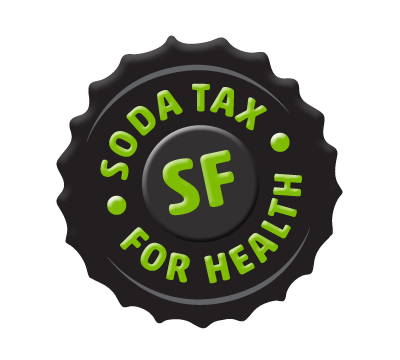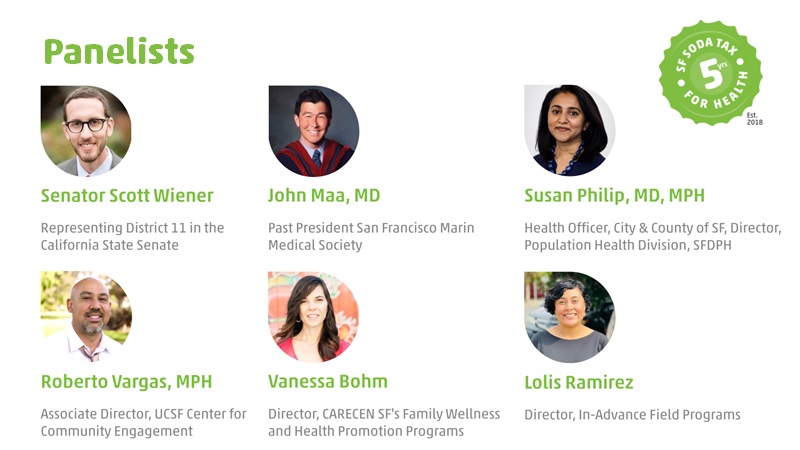By Marianne Szeto
I started my career in public health in 2007 as a fresh-faced newbie who wanted to make the world a better place. I was so fortunate to land a job at the San Francisco Department of Public Health, staffing the Shape Up SF Coalition. In this role and in partnership with many others, I helped implement outreach and awareness campaigns (Soda Free Summer, Rethink Your Drink, Drink Water Said the Otter, Choose Healthy Drinks, Open Truth), countless tabling events in the community, train-the-trainers, trainings on industry tactics, sugar science, and more. All this to soften the ground in hopes of a sustainable funding stream to prevent chronic diseases like type 2 diabetes and heart disease. And in 2016, that dream came true! SF voters passed the soda tax, and then the hard work began to show that soda taxes are effective tools to reduce consumption of liquid sugar and over time, can lead to a decrease in preventable diet-sensitive chronic diseases.
I was beyond thrilled to celebrate the 5-year anniversary of the soda tax, and especially to help plan the last event of the week-long celebration: a virtual policy panel with phenomenal speakers. The American Heart Association and Sugary Drinks Distributor Tax Advisory Committee co-hosted a panel of policy champions (Senator Scott Wiener), grassroots organizers (Lolis Ramirez), community (Vanessa Bohm) and physician (Dr. John Maa) advocates, researchers (Roberto Vargas), and public health professionals (Dr. Susan Philip) to look at the lessons learned and future of sugary drink policies. Expertly co-hosted by Abby Cabrera, Co-chair of the Sugary Drinks Distributor Tax Advisory Committee, and moderated by Blythe Young, Community Advocacy Director for the American Heart Association, the cross-cutting theme that emerged for me was about the strength and power in community. If you didn’t get a chance to watch the live webinar, here’s the recording.
Panelists discussed the early days of the political campaign, the challenges that an underfunded and under-resourced campaign faced against a multi-million dollar industry, preemption, and critical steps to implementing the advisory committee, gathering community input to inform the recommendations of the committee, and the importance of educating the public about where the funds are going. (This is an area in which San Francisco can certainly improve!)
Key to San Francisco’s successful implementation of the soda tax is holding the community at the center of our work. And in San Francisco, we’re doing just that. As Dr. Philip shared in her high level overview of the evaluation findings from Raimi + Associates, the funds that are going into the community to fund programs, services, systems-level and structural changes are the same communities that are most targeted by the beverage industry, and most impacted by diet-sensitive chronic diseases. Even more powerful is the realization that these maps also overlap with the redlining maps. Soda taxes are a tool to address health equity because the community has been invested in this process from the very beginning. (Check out the interactive maps and data dashboards by our evaluators, Raimi + Associates.)
So where do we go from here? What does the next 5 years of San Francisco’s soda tax look like? What advice did panelists have for jurisdictions considering a local soda tax now that the penalty provision has been lifted from the state level preemption? Here are some powerful messages from panelists:
- “Start with community” – It needs to come from the community, for the community. Starting from grass bottoms to grass tops will lead to a better chance of success.
- Find your trusted community leaders to share their stories with policy leaders.
- Strength in numbers. Chances are stronger when cities band together, especially in a shared media market.
- “Democracy is not a spectator sport” – everyone should engage in opportunities to strengthen the soda tax.
It all starts with wanting to make a difference. Investing in our community is investing in our community’s long-term health and wellness because the community is at the root of all this work.
Don’t just take it from me. Watch the recording to hear it directly from our panelists and prepared to be inspired. See the slides.


